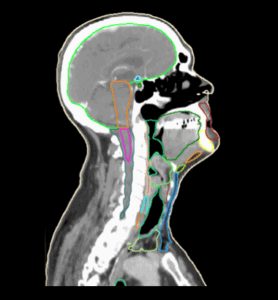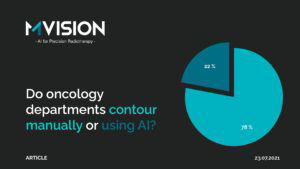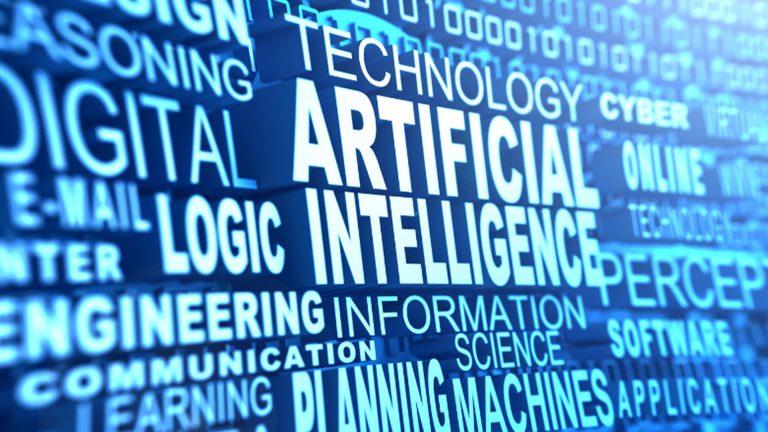Advancements have been improving the lives of health-care workers and their patients in the field of radiotherapy worldwide. Many of the tasks performed manually can be automated, saving medical professionals time and increasing consistency. One of the recent achievements involving automation in the medical industry, is the automation of contouring for radiotherapy.

What is contouring?
Contouring is defined as the outline of a part or the surface configuration. During radiotherapy treatment planning, a physician contours cancerous tumors and the surrounding organs (or organs at risk), based on medical imaging. Typically, medical imaging is obtained from diagnostic medical imaging tests, including CT and MRI scans.
The Poll
With this in mind, MVision AI sought to better understand the current state of contouring in oncology departments for radiotherapy. MVision AI conducted a poll, sent via social media platforms, asking the question: How does your oncology department primarily contour for radiotherapy? Respondents were given the opportunity to select one of the following options: manually, or using AI technologies.
The overwhelming majority, 78% of respondents, stated that they primarily manually contour, while the minority, 22% of respondents, stated that they use AI technologies to contour. Perhaps the results could be due to the fact that doctors may prefer to rely on their experience, and in the past, the medical community was slower to trust automated medical devices. However, the trend is changing; oncologists are starting to rely on AI-based contouring technologies more frequently due to their many advantages.

Advantages of automated healthcare services
There are benefits to manually healthcare services (including contouring), but there are benefits to automated healthcare services (including automated contouring) too. According to Advanced Data Systems Corporation, here are 5 ways that automated healthcare services can benefit the medical industry:
-
Faster data retrieval
Advancements in medical devices have been improved to generate data in real-time -
Early disease detection
Early detection allows for early treatment, reducing disease progression. As stated by Tom Peterson, “with technological advances like AI in healthcare, it’s easier to determine if a patient has a particular disease. In most cases, this happens before the appearance of the symptoms.” -
Minimal errors
Computerized systems can help to reduce errors, while offering timely and efficient services. -
Safer treatment solutions
Accurate machine learning technology helps to minimize the likelihood of medical malpractice from an improper diagnosis. -
Superior long-lasting equipment
Manual diagnostic machines are prone to damages, whereas automated processes can be less likely to deviate from the task. According to Tom Peterson, “the equipment will rarely break down. This saves patients a lot of time that would instead be used to visit the hospital to get test results.”
MVision AI is automating radiotherapy to help you
MVision provides the highest quality, guideline-based and secure SaaS auto-contouring services. MVision speeds up radiotherapy treatment planning, delivering fully automated 3D models within minutes. MVIsion AI helps you to standardize organ-at-risk contouring, and automate segmentation in radiotherapy. Our deep learning model produces consistent contouring while maintaining the highest standards of quality, and remaining GDPR compliant.
MVision appreciates all of the thoughtful responses to the aforementioned poll. The MVision AI team would like to thank all of the amazing participants who responded.
To stay up-to-date on the latest news and information, visit our website or follow us on LinkedIn.
For more information on our services, contact MVision AI:
c/o Terkko Health Hub, Haartmaninkatu 4, 00290 Helsinki, Finland.
Tel: +358 (0) 40 5489 229
Email: info@mvision.ai
Fore media inquiries
Tel: +358 40 500 7915
Email: pr@mvision.ai
Sources
“Contour.” The Free Dictionary, Farlex, medical-dictionary.thefreedictionary.com/contour.


